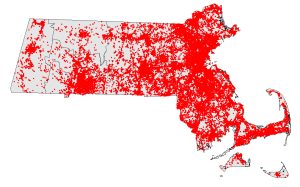A National Institutes of Health-funded five year study
After more than two decades of exponential growth, opioid overdose deaths remain at crisis levels throughout the US, affecting individuals, families, and communities at all socioeconomic levels. Rapidly changing substance use patterns, the evolving drug supply, and a vast array of sociodemographic factors, all of which vary geographically, require sophisticated analysis to understand where and when future opioid-involved overdose spikes will occur.
P2P is using a first-of-its-kind statewide Public Health Data Warehouse, linking together more than 80 datasets from Massachusetts government agencies and health insurers. These person-linked data allow for the estimation of comprehensive overdose prediction models across Massachusetts ZIP codes.
Using our state-of-the-art Bayesian spatiotemporal predictive models, we are filling in fundamental gaps in the ability to rapidly identify current overdose patterns, forecast future overdose trends, and evaluate the potential effectiveness of public health and clinical interventions. Our ultimate goal is to identify communities at greatest risk and to inform policy and the design and timely deployment of tailored, evidence-based interventions to reduce overdose mortality.
For more information contact: p2p@tufts.edu
Acknowledgments Research reported in this website was supported by National Institute on Drug Abuse of the National Institutes of Health under award number R01DA054267 (MPIs: Stopka, Bauer). Use of the Public Health Data Warehouse is made possible by the Massachusetts Department of Public Health (MDPH). The content is solely the responsibility of the authors and does not necessarily represent the official views of the National Institutes of Health or MDPH.

